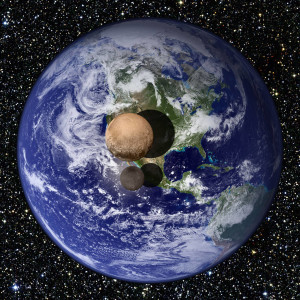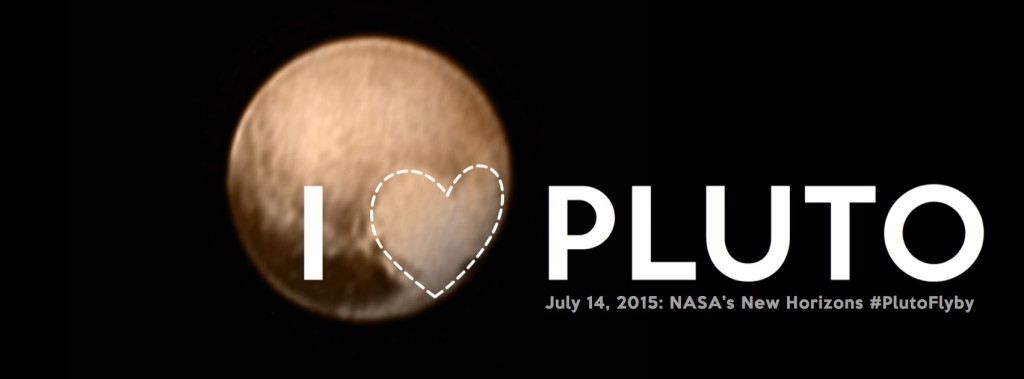Tomorrow, July 13th we get our first good look at Pluto. The internet is buzzing with excitement of what we will see.
It has taken New Horizons almost nine and a half years and 3 billion miles from launch to reach Pluto. It’s a long journey but it’s almost there. You can find out everything about the mission from the Press Kit.
We also finally know how big Pluto really is. 1,473 miles (2,370 kilometers) in diameter, larger than previous estimates, and Pluto is larger than all other known solar system objects beyond the orbit of Neptune. (Source)
If you went to elementary school prior to 1992 you probably remember something like “My Very Educated Mother Just Served Us Nine Pizzas” or some other similar mnemonic to remember the names of the nine planets, (Mercury Venus Earth Mars Jupiter Saturn Uranus Neptune Pluto). Though due to Pluto’s reclassification we only got served Nine. Nine of what kids today will never know. However, a 2015 New York Times article suggested some mnemonics including, “My Very Educated Mother Cannot Just Serve Us Nine Pizzas—Hundreds May Eat!” to remind us of the other classified dwarf planets as well. (Source) (Mercury Venus Earth Mars Ceres Jupiter Saturn Uranus Neptune Pluto Haumea Makemake Eris)
So what happened to Pluto, why did it get demoted?
The credit of booting poor Pluto goes to the International Astronomical Union under Resolution 5A and 5B. In 2006 a formal vote was taken on what makes a planet a planet. Their determination is as follows:
RESOLUTIONSResolution 5A is the principal definition for the IAU usage of “planet” and related terms.
Resolution 6A creates for IAU usage a new class of objects, for which Pluto is the prototype. The IAU will set up a process to name these objects.
IAU Resolution: Definition of a “Planet” in the Solar System
Contemporary observations are changing our understanding of planetary systems, and it is important that our nomenclature for objects reflect our current understanding. This applies, in particular, to the designation “planets”. The word “planet” originally described “wanderers” that were known only as moving lights in the sky. Recent discoveries lead us to create a new definition, which we can make using currently available scientific information.
RESOLUTION 5A
The IAU therefore resolves that planets and other bodies in our Solar System, except satellites, be defined into three distinct categories in the following way:
(1) A “planet” [1] is a celestial body that (a) is in orbit around the Sun, (b) has sufficient mass for its self-gravity to overcome rigid body forces so that it assumes a hydrostatic equilibrium (nearly round) shape, and (c) has cleared the neighbourhood around its orbit.
(2) A “dwarf planet” is a celestial body that (a) is in orbit around the Sun, (b) has sufficient mass for its self-gravity to overcome rigid body forces so that it assumes a hydrostatic equilibrium (nearly round) shape [2], (c) has not cleared the neighbourhood around its orbit, and (d) is not a satellite.
(3) All other objects [3], except satellites, orbiting the Sun shall be referred to collectively as “Small Solar-System Bodies”.
IAU Resolution: Pluto
RESOLUTION 6AThe IAU further resolves:
Pluto is a “dwarf planet” by the above definition and is recognized as the prototype of a new category of trans-Neptunian objects.








